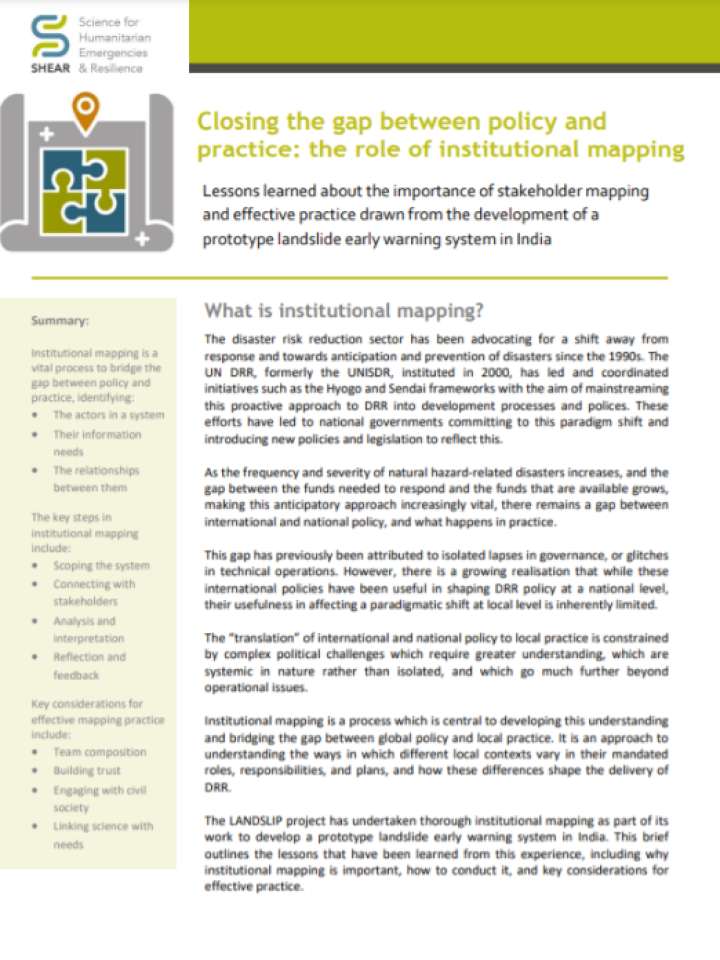Closing the gap between policy and practice: the role of institutional mapping
This brief outlines the lessons that have been learned from India's experience with institutional mapping, including why it is important, how to conduct it, and key considerations for effective practice. Institutional mapping is a process which is central to developing this understanding and bridging the gap between global policy and local practice. Institutional mapping is raised as a potential solution for gaps between international and national policy, and what happens in practice regarding disaster risk reduction. It is an approach to understanding the ways in which different local contexts vary in their mandated roles, responsibilities, and plans, and how these differences shape the delivery of DRR. The LANDSLIP project has undertaken thorough institutional mapping as part of its work to develop a prototype landslide early warning system in India.
The paper finds important lessons from experiences with LANDSLIP. Firstly, the importance of team composition. The specific consideration and inclusion of contextual knowledge at the first step of project design is a key consideration, and should be prioritised from the outset when identifying roles and skills required in the team. Secondly, building trust between the disaster risk management team and local stakeholders, particularly local officials. Thirdly, engaging with civil society who have knowledge and understanding about the local context, such as community priorities, previous experience of research projects, prevailing perceptions, and social dynamics, which is of key importance to the success and sustainability of the project. And finally, linking science with practical needs. Identifying these gaps between what the forecasting science can provide and what stakeholders need can therefore provide institutional actors with concrete recommendations for policy actions.
Explore further
